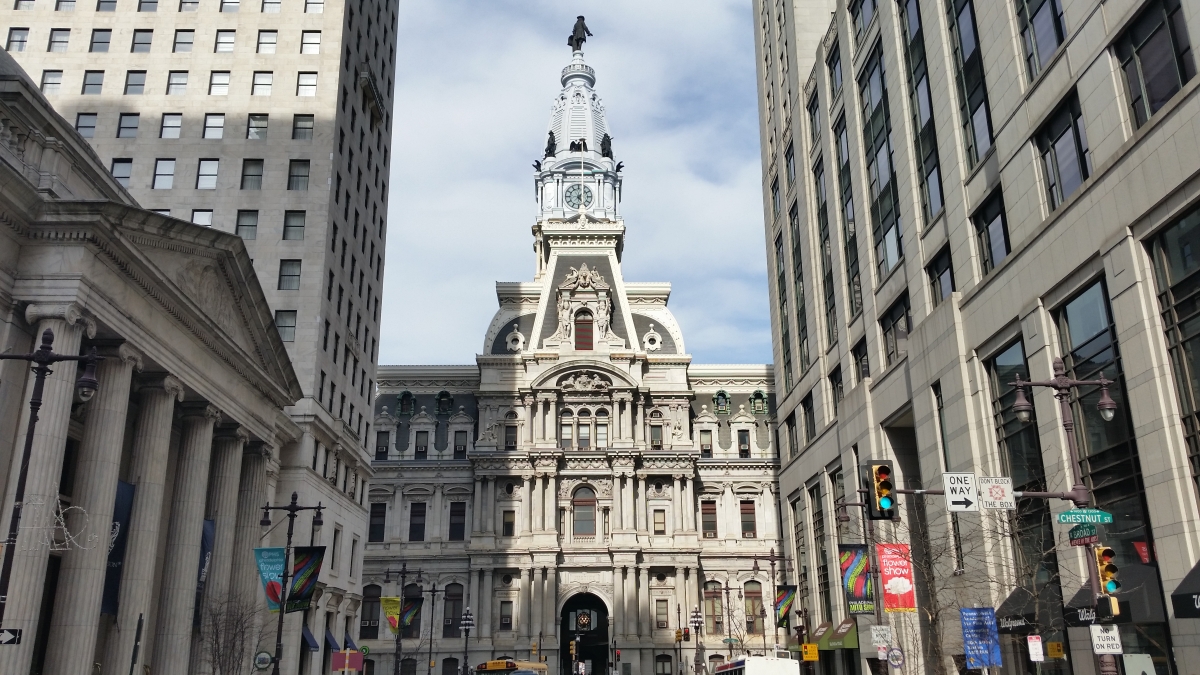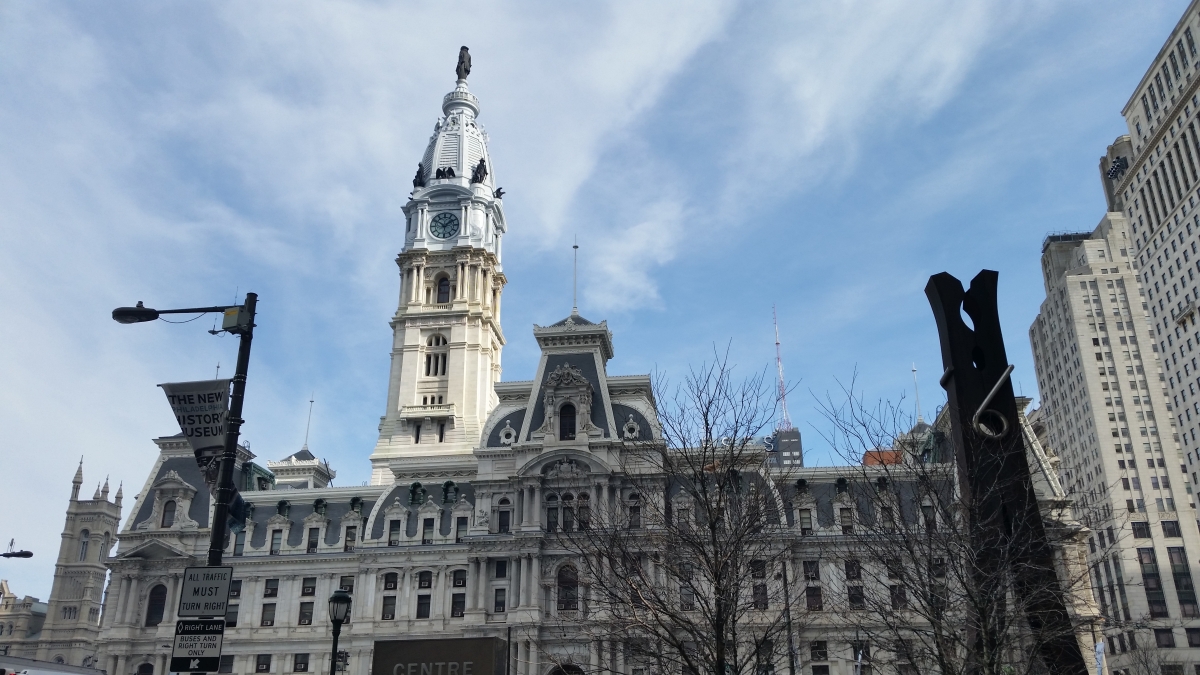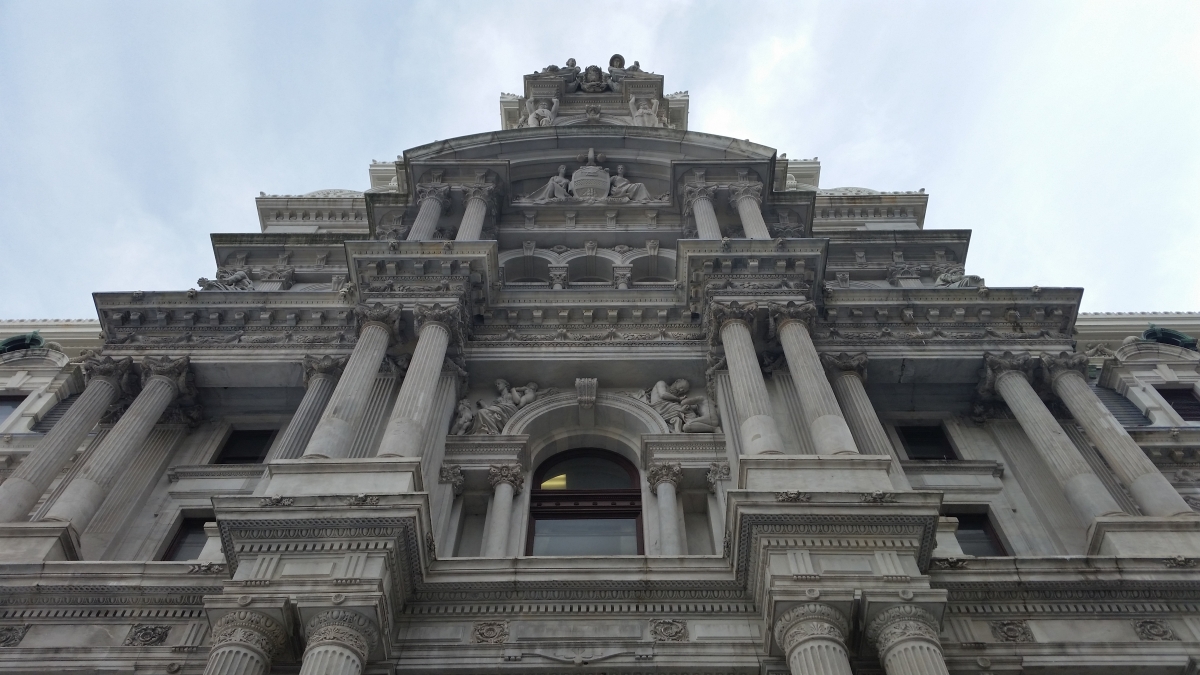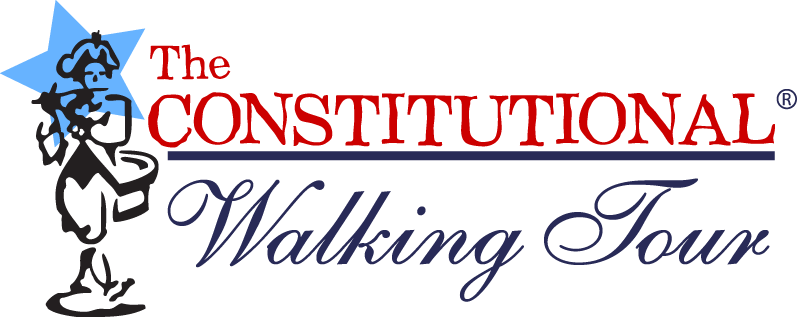In the center of Philadelphia sits a testament to Philadelphia’s grand ambition and the tallest masonry building in the world.
The History
When William Penn first planned the street grid of Philadelphia in 1682, the land on which Philadelphia’s City Hall now stands was called Centre Square and was designed to be the center of Philadelphia, not just geographically, but of city government as well. Early Philadelphians weren’t having it though; the Delaware River was the early center of Philadelphia’s economy and most people who came to Philadelphia settled very close to the river that makes up Philadelphia’s eastern border. The location of Philadelphia’s first City Hall reflected this reality as it was constructed on 2nd and Market Streets, within sight of the mighty Delaware.

Philadelphia City Hall
Throughout the first century of Philadelphia’s existence, the edge of Philadelphia abutting the Delaware River grew into the center of the largest city in America; but populations grew very sparse just blocks away from the Delaware. In 1776 when Thomas Jefferson set out to leave the urban bustle of Philadelphia for peace and tranquility to write the Declaration of Independence, he was able to find it at 7th and Market Streets, just a few hundred yards away from Independence Hall! Philadelphia’s new City Hall (now known as Old City Hall) moved westward in 1791 (albeit only slightly) to the corner of 5th and Chestnut Streets. Old City Hall still stands today and is actually one of the stops on The Constitutional Walking Tour!
In the early 18th Century Philadelphia’s population began to explode and people finally began settling all over Philadelphia. Then in 1854, Philadelphia annexed the land of neighboring towns; greatly increasing the land area of the city and suddenly making Philadelphia only the second American city to surpass 500,000 people. Old City Hall was by this time woefully out of date and impractically small for a city of Philadelphia’s size and plans began to be made for the construction of a new city hall. The American Civil War delayed those plans until 1871 when construction began on Philadelphia’s City Hall. The chosen location for the grand new hall was Penn’s Centre Square. Finally, William Penn would get his wish; Centre Square was to become the center of Philadelphia’s government.
Scottish born architect John McArthur Jr. was chosen to be the architect of Philadelphia’s City Hall and to call his plan bold is quite an understatement. The complexity and scope of City Hall’s size was unlike anything the world had seen before. The building would take a remarkable 30 years to construct. The base of the building was made of solid granite, with walls up 22 feet thick in order to support the massive weight of the heaviest stone building in the world. City Hall would eventually reach a height of 548 feet, becoming the tallest building in the world upon its completion. Even today, Philadelphia’s City Hall still stands as the tallest entirely masonry supported building in the world.
Surprisingly, despite the massive architectural achievement, many Philadelphians weren’t exactly thrilled with City Hall upon its completion. Not even John McArthur was pleased, although he did have a good excuse as he had passed away in 1890, over a decade before the building was completed. Other Philadelphians were upset mostly over the long construction period of the building and its massive cost. Philadelphia’s City Hall cost 25 million dollars to construct, an enormous sum of money for the time and many Philadelphians saw it as a symbol of a city government that many believed to be corrupt. Other Philadelphians were disappointed with the appearance of City Hall. McArthur designed the building in the Second Empire Style, complete with a mansard roof that he himself was largely responsible for popularizing in America. While the Second Empire Style was in vogue in 1871, by the time the building was completed decades later, many viewed the building as embarrassingly out of style. There were even serious talks about demolishing the building in the 1950s, an action that was largely avoided only due to the prohibitive costs of demolishing the massive stone structure. Thankfully Philadelphia’s City Hall was able to stave off the wrecking ball and has by today become one of the most beloved buildings in Philadelphia and rightly recognized as an astonishing achievement of architecture that displays the ever ambitious and revolutionary spirit of Philadelphia.
What to See
For an in depth look at City Hall you have a number of options. A tour gives visitors a two hour long tour of the interior the building. This tour occurs once a day during the weekdays and is at 12:30 PM. City Hall also has an observation deck that visitors can check out. The observation deck allows visitors to travel all the way up City Hall’s tower and gather right beneath the statue of founder William Penn that sits upon the highest point of the building.

Philadelphia City Hall with Dilworth Park in the foreground
While at City Hall you should also be sure to check out Dilworth Park. Located directly beside Philadelphia’s City Hall, the park is complete with its own café, a lawn, and either an ice skating rink or fountain depending on the season. For more information you should check out our blog entry dedicated entirely to Dilworth Park!
Appreciating City Hall doesn’t necessitate a guided tour however; simply admiring the building on your own can be a rewarding experience. While looking at City Hall, be sure to pay special attention to the many sculptures that adorn the building’s façade. Over 250 sculptures were created over the course of 20 years by Scottish sculptor Alexander Milne Calder. Calder’s amazing sculptures can be seen all over the building’s exterior and represent a diverse range of topics. Allegorical sculptures attempt to demonstrate the history of Philadelphia using sculptures of Native Americans and early Swedish settlers. Other subjects include depictions of the many people from all over the world who came to make Philadelphia their home and many depictions of local wildlife. The most significant sculpture is that of Philadelphia’s founder, William Penn. Located on the top of the highest point of City Hall, the sculpture is 37 feet tall and weighs 27 tons! It is the largest sculpture to top a building in the world.
Insider Tips
Speaking of Calder’s William Penn sculpture, it bears pointing out that this statue is famous for much more than just its impressive size. When City Hall was completed the building was the tallest in the world, making William Penn’s statue the tallest man made point in the world. Even after buildings in other cities surpassed the height of William Penn, the sculpture continued to stand as the tallest point in Philadelphia for decades.
When the city finally allowed skyscrapers to rise taller than Philadelphia’s City Hall in the 1980s many Philadelphians were furious. Some even say the ghost of William Penn subsequently cursed the city of Philadelphia for allowing his statue to be surpassed in height. If you’re interested in learning more about the tale of the “Curse of William Penn,” you should join us on the Spirits of ’76 Ghost Tour. Our nighttime haunted tour tells guests all about this terrifying tale!

Philadelphia City Hall
How to Get There
Considering the fact that both of Philadelphia’s two main subway lines intersect at City Hall, public transit is a great way to get to City Hall. Guests of The Constitutional Walking Tour can easily reach the Market-Frankford Line by walking one block south from The National Constitution Center, where all of our tours both begin and end. Enter the station at 5th and Market Streets and take the line west to 15th street. As you exit the subway you’ll find yourself right at City Hall.
City Hall is also easily accessible by foot, guests of The Constitutional Walking Tour should walk west down Arch Street from the National Constitution Center, then make a left on Broad Street to reach City Hall. While street parking is scarce in the vicinity of City Hall, those who wish to drive can park in any one of the numerous parking garages near City Hall.
Hours
Observation Deck:
Mon – Fri: 9:30am – 4:14pm
Interior Tour:
Mon- Fri: 12:30pm
Additional Information
Broad and Market Streets
Philadelphia, PA 19102
215.686.2840




